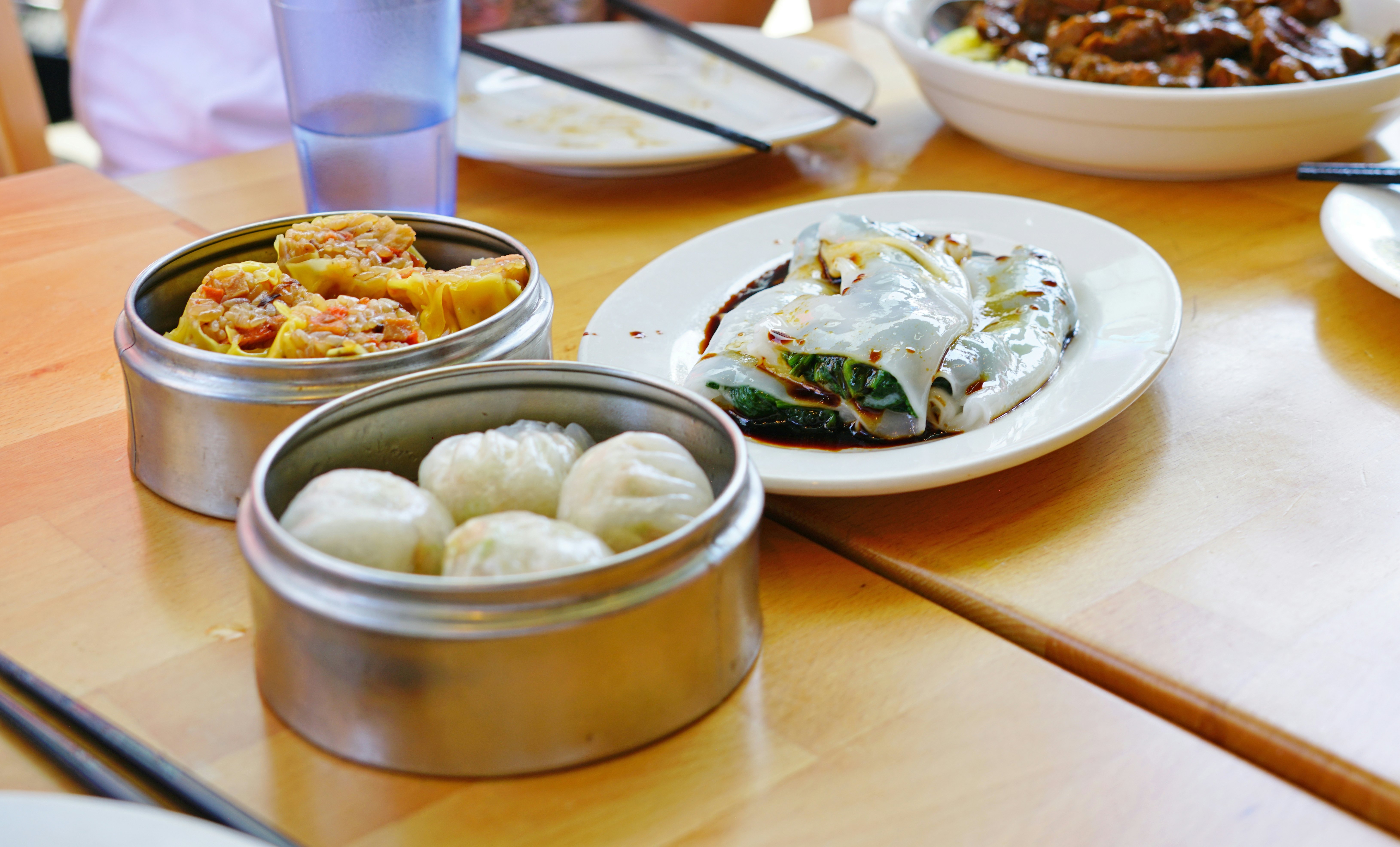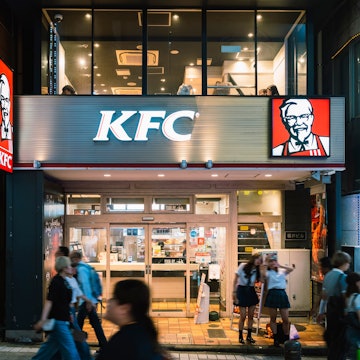

Outdoor tea shop in Chengdu, China. peacefoo/Shutterstock
China serves up a dizzying array of dishes for food lovers to try – and when you travel around the country, you can truly appreciate the nuances in flavors and textures. You'll discover regional variations in ingredients, seasoning and cooking techniques, and the influences of different religious beliefs and cultural customs, especially in the areas along China’s borders. So for a taste of what makes this country so special, here are some of the best things to eat and drink while you’re there.
Unwrap ye'er ba, a bite-sized Chengdu snack
Chengdu has a strong street food scene born out of the city’s many tea houses. Among the myriad options, ye'er ba is unique because there are so many variations. Fully or partially wrapped in leaves from plants like bamboo, corn and banana, these sticky glutinous rice parcels are often savory and filled with minced pork, but they can just as easily be sweet.
Where to try it: Zhong Shui Jiao has branches all over Chengdu, including inside People’s Park, and their menu is a best-of list of Chengdu street food.

Savor Hangzhou’s Longjing tea prawns
Produced in and around the city of Hangzhou, Longjing (dragon well) is a delicate green tea with a light, grassy scent. Young leaves, ideally picked before Qingming Festival (tomb sweeping day) in April, are stir-fried with plump river prawns for this flavorsome dish (Longjing xia in Chinese), with the slight bitterness of the tea helping to bring out the sweetness of the prawn.
Where to try it: The aptly named Lv Cha Can Ting (green tea canteen), by a small lake off Longjing Road, offers Longjing xia alongside other tea-infused dishes.
Bite into Xi’an’s pan-fried persimmon cakes
Xi’an’s shi zi bing, or persimmon cake, is made using a persimmon and wheat flour pastry, stuffed with sweet pastes ranging from sesame and red bean to osmanthus and rose. They’re fried in oil, which gives the pastry a chewy texture – but make sure you buy a freshly made one, as otherwise they can be greasy.
Where to try it: You’ll find them at street food stalls around the city’s Muslim Quarter, but Yi Gu Zhai Huang Gui Shi Zi Bing has one of the widest selection of flavors.
Tear into Shaoxing drunken chicken
The city of Shaoxing is famed for its yellow rice wine, which is better known for cooking than drinking. For this cold appetizer, known as zui ji, the chicken is gently poached or steamed with ginger and scallions before the cooking liquor is reduced with Shaoxing rice wine to intensify the flavor. This liquid is then used to marinate the chicken to give the meat a boozy highlight.
Where to try it: Xun Bao Ji on Fu Shan Heng Street specializes in Shaoxing dishes, with drunken prawns, crabs and even desserts also on the menu.
Break into an osmanthus cake from Guilin
Guilin takes its name from the osmanthus tree, whose tiny flowers are richly perfumed and edible. The city’s speciality, gui hua gao, combines the blossoms with rice flour to create a small, yellow pastry. Although its name translates to osmanthus cake, the texture is more powdery and the cake crumbles like a cookie.
Where to try it: They’re often sold from roadside stalls, but head to Zhengyang Street and you’ll find the flagship store for Li Yuan, one of the city’s oldest pastry brands, where you can sample different versions of the cake.

Scoff bowls of Yangzhou fried rice
Yangzhou’s chao fan (fried rice) is prized for its depth of flavor and its use of premium ingredients. The essentials are egg, salt-cured ham from Jinhua city, shrimp and diced vegetables, but you might also find scallops and sea cucumber in the mix. A key feature of the dish is that day-old rice is used – the lower moisture content helps to keep every grain separate.
Where to try it: Wu Xing Ji on Xu Ning Men Street specializes in fried rice so you’ll be able to taste different versions of the dish.
Dip into a Beijing hot pot
Unlike the spicy hot pots of Sichuan, Beijing’s mild version focuses on lamb and mutton. Its colloquial name, shuan yang rou, tells you everything you need to know – it literally translates to rinsing lamb. The idea is that you dip thin slivers of meat into boiling water to quickly cook it before dipping it into a sesame paste–based sauce to eat.
Where to try it: At Nan Men Shuan Rou on Jian Guo Men Nei Street, everyone gets their own hot pot so you can enjoy the food at your own pace.
Toast with thimbles of báijiǔ
No celebration is complete without báijiǔ, a fiery and aromatic spirit with alcohol content as high as 65% ABV. It can be made from different grains, with varying flavor profiles. But it is universally served neat in thimble-like cups that are designed to be emptied every time you toast.
Where to try it: You can order it in any bar or licensed restaurant, but the Shuijingfang Museum in Chengdu is a good place to learn about the spirit’s production before enjoying a guided tasting.

Vegetarians and vegans
Thanks to the influence of Buddhism, there’s long been a tradition for vegetarian and vegan food in China. In bigger cities it’s fairly easy to find a vegetarian restaurant that will also cater to vegans, though strictly vegan outlets can be harder to come by. If you go off the beaten path, you’ll still find vegetarian and vegan food on menus, although these may be cooked alongside meat dishes. It’s worth carrying a translated card detailing your dietary restrictions to avoid any confusion.
A year in food
Modern agricultural practices mean food in China tends to be guided by traditional holidays rather than the seasons. This is especially true when you consider that, with the Gobi Desert to the north, the Himalayas to the west and tropical shores to the south, the seasons can vary enormously depending on where you are.
January or February
Symbolizing prosperity, nian gao, a dense, sticky cake made from glutinous rice, is eaten around the Chinese new year, especially in the southern provinces.
May
Pyramid-shaped parcels of glutinous rice called zongzi are always eaten as part of Duanwu Festival celebrations, which often feature dragon boat races. The zongzi can be plain, sweet or savory.

September or October
Mooncakes (yue bing) are used to mark the Mid-Autumn Festival each year, and will feature different fillings depending on where you are in the country.
October to November
Da zha xie, or hairy crabs, come into season in autumn and are particularly prized in Shanghai, where they’re eaten steamed with a simple dipping sauce of black vinegar and ginger.














